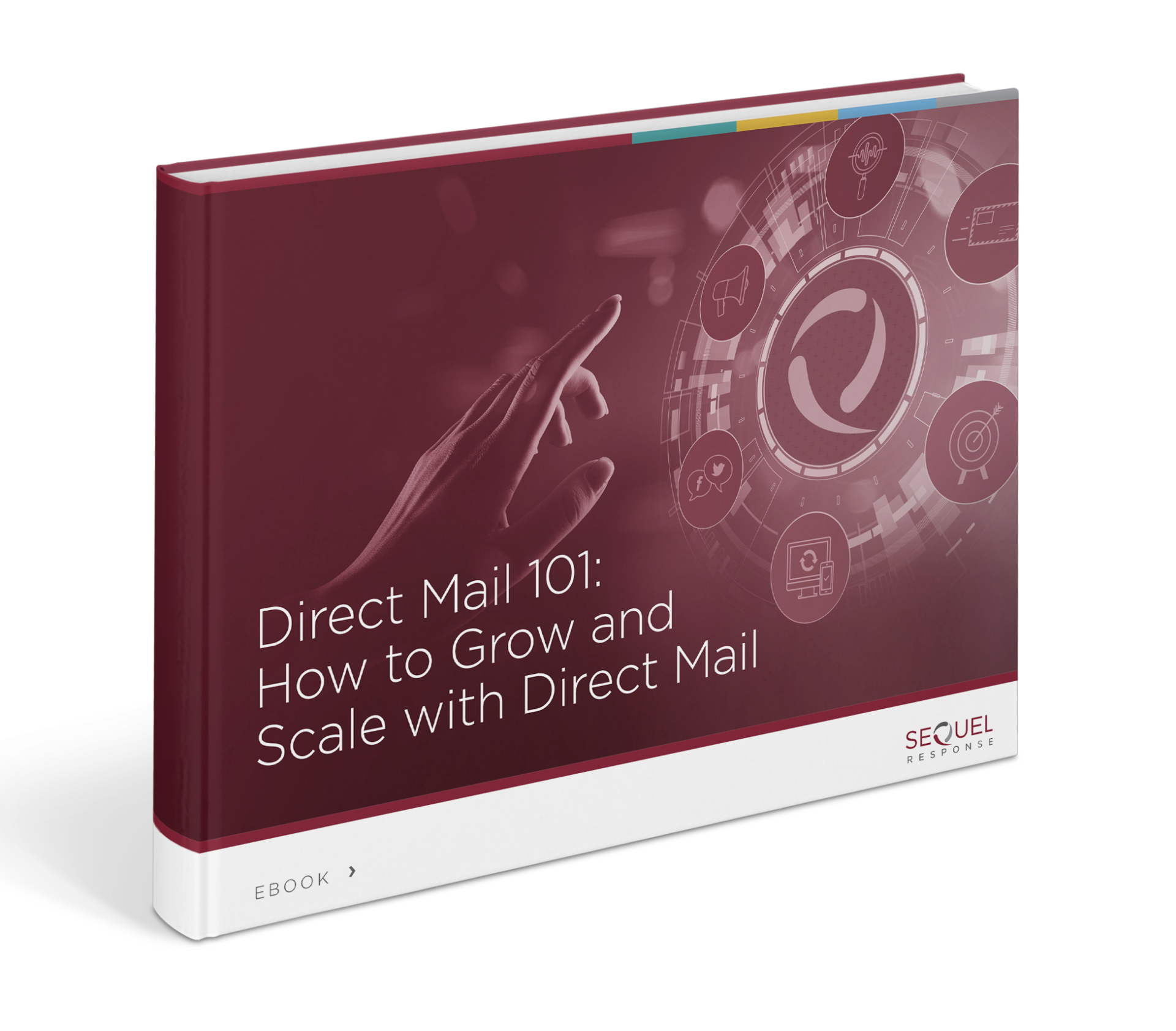Why use direct mail marketing?

As consumers adopted e-commerce and the digital world flourished, you may have questioned why use direct mail marketing? We get it. Digital marketing has been a successful strategy for many of today’s leading DTC brands. But the reality is that direct mail is not only alive, it’s consumer response is even better than it used to be! In fact not using mail could leave you missing out on the marketing channel with the highest potential for profitable growth and return on investment.
If you’re new to the direct mail channel, download this free e-book, Direct Mail 101: How to Grow and Scale with Direct Mail. In addition to the 7 short how-to guides, you’ll find best practices and checklists to get your campaign started, plus case studies from the channel’s top performers.
Before we dive into why it’s time to dust off direct mail, let’s define what it is.
What is direct mail marketing?
A direct mail marketing campaign is most commonly used by businesses and organizations to deliver promotional advertisements directly into the mailboxes of current or potential customers. Catalogs, letters, postcards, brochures and flyers are the most common direct mail piece formats. Marketers rely on this form of marketing to generate leads, reach new target audiences, build brand awareness, drive customer loyalty, and more.
The most successful direct mail campaigns include five critical elements:
- Audience targeting (relevance and personalization)
- Offer, Call to Action (CTA), and deadline (compelling discounts, special offers, deals and promotions)
- High-quality print materials and design work (bright colors and engaging visuals)
- Robust testing strategy
- Digital channel integration
Finding the perfect balance between offline and online channels in modern marketing
We aren’t saying you need to choose between direct mail and digital marketing. Instead, we want to stress why marketers use direct mail marketing alongside digital advertising strategies.
The two forms of marketing are both fueled by the secret sauce to direct response: targeted audience modeling. Especially in prospecting campaigns, lookalike modeling ensures your marketing message reaches and resonates with your target audience. These custom models are based off your best customers, and leverages demographic, behavioral and psychographic data derived from offline data sources to identify the best performing consumers for both your digital and direct mail marketing efforts.
Running integrated campaigns can result in a 40% lift in conversion rates verses direct mail alone.
Now, back to the objective of this article… here are seven reasons why direct mail deserves a spot in your marketing strategy:
The response rate is high
Direct mail works. Believe it or not, people more likely to respond to direct mail than digital advertising.
When you consider that 58% of consumers open and read promotional mailers, the odds of an impressive amount of responses are already in your favor. Pair that with an average direct mail response rate of 9% for house lists and 5% for prospect lists – that’s three times higher than all digital channels combined. Staggering performance metrics like these are the number one reason why marketers continue to use direct mail marketing to drive conversions.
The DMA/ANA Response Rate Report also revealed that the size of the mailer can influence the results, with letter-sized direct mail earning a 15.1% response rate. Online tracking, coupon codes, QR codes, and contact center reports can help you measure these winning numbers.
The ROI is real
Direct mail’s promising response rates generally earn brands a considerable return on investment. Recent ANA research reports direct mail earns an ROI of 112% when prospecting — higher than the top five digital strategies. When a mail campaign targets your best possible prospect audience, you can earn higher order values and stronger customer relationships, all of which impact your overall CPA tolerance. In fact, if you were to launch into the channel today, it’s likely that less than 1 out of 100 targets would have to buy for the campaign to be a profitable endeavor for your company.
Direct mail can break through the growth ceiling
When it’s time to scale, mail is your channel. With a rich data environment and predictive modeling, the prep work conducted before sending out mailers can identify hundreds of thousands of incremental prospects. Plus, direct mail modeling piggybacks off of your digital efforts, leveraging lists of customers from your online sources to identify similar prospects. For example, this identify theft protection service converts hundreds of thousands of new customers each year and drives 40% of its annual sales from the mail channel. With growth like this, you can afford to dedicate more marketing budget to direct mail.
Home is where the decisions are made
The majority of consumers make important purchase decisions in the comfort of their homes, where they regularly discuss decisions within their personal network of family and friends. And for big-ticket items, consumers feel more confident in their purchase when they have time to plan and do their research.
When your direct mail content shows up in a consumer’s mailbox, your brand becomes part of that buying process. Despite much of the consumer’s buying research happening on phones or computers, the mailer can enhance their search for the right product or service with a standout touch point.
Tangible is memorable
There is an endless sea of information to scroll through on our screens each day. But our mailboxes aren’t nearly as cluttered, which means your message has a greater chance of making an impression. For fear of missing something important, few people throw away mail before at least glancing at it. What’s more, it’s harder to forget something we hold in our hands versus something we view on a device.
Canada Post partnered with a neuromarketing research and strategy firm to confirm this theory, revealing that direct mail requires 21% less cognitive processing effort than digital content. That makes physical content easier to comprehend, translating to a 70% higher recall rate.
Marketing guru Neil Patel also noted that a piece of direct mail has an air of romanticism that isn’t dissimilar to the feeling we get from receiving a handwritten note. To that point, adding handwritten elements to mailers can add a personal touch and resonate with consumers.
Direct mail appeals to several audiences
Direct mail campaigns allow you to reach a wide range of consumer groups, with less competition. It probably doesn’t come as a shock that mailers are an effective way to reach older audiences, namely because many older adults don’t engage in social media and checking the mailbox every day is a lifelong habit.
However, direct mail is still in the cards when targeting a younger audience. Direct mail resonates with the millennial audience, largely due to digital fatigue. Research from the United States Postal Service revealed that 84% of millennials take time to check their mail, and 64% prefer scanning physical mail over emails.
Predictive modeling means better targeting
Today’s direct mail campaigns get an added boost from better data and more sophisticated modeling techniques. These methods allow for robust direct mail testing efforts that ensure money is well spent on mailing to promising prospects.
A combination of multiple data sources, unique models and real-world competition can drive targeted, high-performing campaigns. SeQuel’s sophisticated PrediQtor model, as one example, can help marketers greatly increase their odds of success.
——–
If these seven reasons don’t change your mind, here’s more industry research to show why brands use direct mail marketing to shine through in today’s digital haze.
So, are you ready to give direct mail a shot? Check out our Beginner’s Guide to Direct Mail or use our calculator to determine if direct mail is right for your brand, right now. If you’re ready to discuss your customer acquisition goals and challenges, the SeQuel team is ready to help you develop a direct response strategy to reach your audience with the highest potential. Schedule time with a SeQuel Strategist today.


